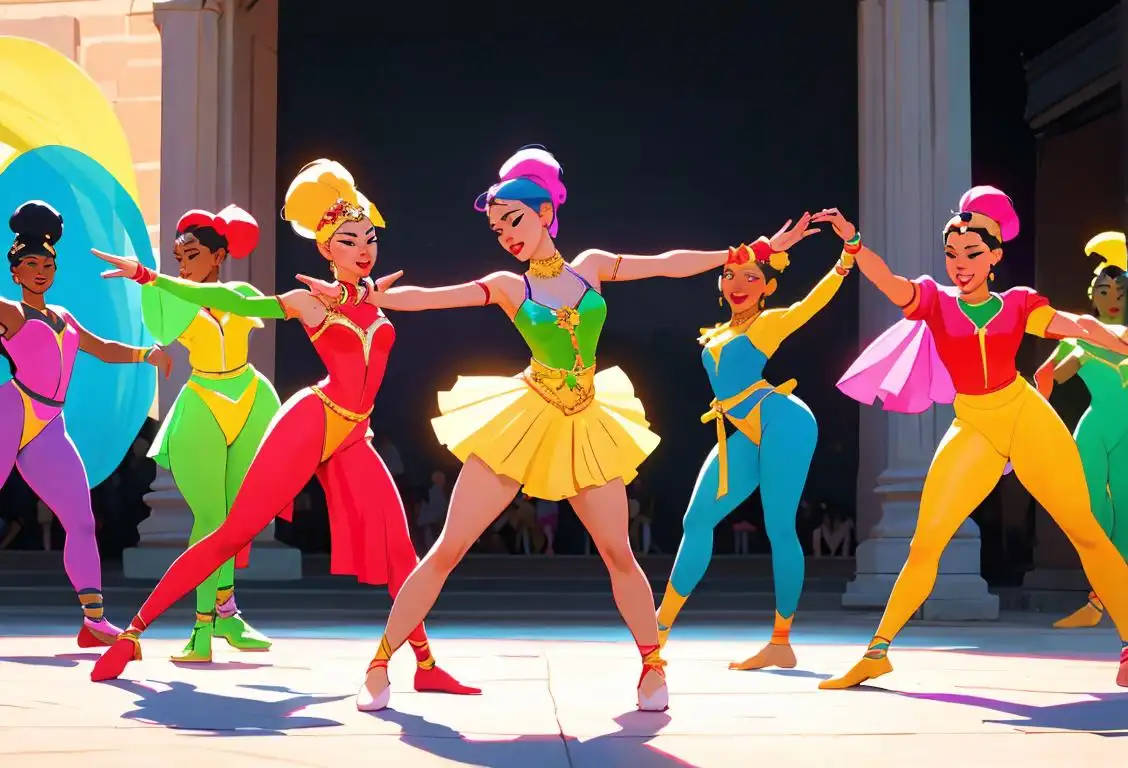National Contrarian Day

Welcome to National Contrarian Day, where we celebrate the art of going against the tide and embracing the unconventional! Prepare to push the boundaries, because on this day, it's all about celebrating the rebels with a cause.
When is Contrarian Day?
It's national contrarian day on the 29th September.
The Origins of National Contrarian Day
On National Contrarian Day, we pay tribute to those who dare to think differently, who swim against the current, and who question the status quo. But where did this glorious day of contrarianism come from? Well, let me take you back to the early days of the internet.
It all started in the year 1998 when a group of internet enthusiasts, tired of conformity and boredom, decided to create National Contrarian Day. They believed that the internet needed a day where people could express their unique perspectives and challenge the norms without fear of judgment or ridicule.
Since then, National Contrarian Day has gained quite the following. From controversial bloggers to online communities dedicated to unconventional thinking, the internet has become a hub for celebrating this day of delightful dissent.
How to Celebrate
Now that you're ready to embrace your inner contrarian and join the celebration, let me give you a few ideas on how to make the most of this extraordinary day:
- Question everything: Challenge commonly-held beliefs and assumptions. Why not take a stand against pineapple on pizza? Or advocate for wearing socks with sandals? The choice is yours!
- Engage in friendly debates: Embrace stimulating discussions and engage with fellow contrarians online. Remember, the key is to promote healthy exchanges of ideas rather than outright arguments. Let your dissenting voice be heard, but with respect.
- Create thought-provoking content: Whether it's writing a blog post, recording a podcast, or making a bold statement on social media, this is your chance to share your unique perspective and spark engaging conversations. Don't be afraid to let your contrarian flag fly high!
Did You Know?
Did you know that the most famous contrarian in history is Socrates? He was an ancient Greek philosopher who challenged the status quo and questioned traditional beliefs. He was so good at it that he even got sentenced to death for corrupting the youth of Athens with his contrary ideas!
History behind the term 'Contrarian'
1935
Origins in financial markets
The term 'contrarian' first emerged in the financial world in 1935. It referred to investors who went against the prevailing market sentiment and made decisions contrary to popular opinion. These individuals believed that by taking contrarian positions, they could anticipate market trends and profit from others' mistakes. The contrarian approach challenged conventional wisdom and highlighted the importance of critical thinking and independent analysis.
1950
The Birth of Contrarianism
Contrarian as a term traces its origins back to the 1950s. It emerged in the financial world, where it referred to investors who made decisions based on opinions that went against the prevailing market sentiment. These individuals were known for their skepticism and willingness to challenge conventional wisdom.
1960
Cultural Roots of Contrarianism
During the 1960s, the term contrarian started to make its way into more mainstream usage. It was embraced by various countercultural movements of the time, particularly in the realm of music and politics. Contrarian artists and activists sought to disrupt and challenge prevailing norms and systems, often pushing boundaries and questioning authority.
1950
Contrarianism in social and political contexts
In the 1950s, the term 'contrarian' extended beyond the realm of finance and began to be applied in social and political contexts. Contrarians in these fields challenged prevailing norms, beliefs, and ideologies. They questioned established traditions and conventions, exposing alternative viewpoints and fostering healthy debates. These contrarians often aimed to provoke thought and encourage critical examination of societal structures and practices.
1990
Contrarianism in popular culture
During the 1990s, contrarianism gained popularity in mainstream culture. The term 'contrarian' started to be used more widely to describe individuals who intentionally took an opposing stance for the sake of being different or provocative. Contrarians became associated with non-conformity, independent thinking, and a rebellious spirit. They were admired for their ability to challenge the status quo and inspire fresh perspectives, even if their motivations weren't always rooted in deep analysis.
1980
Contrarian Investing gains Prominence
In the 1980s, contrarianism gained significant attention in the world of investment. Contrarian investing became a recognized strategy, popularized by influential figures like Warren Buffett. This approach involved going against popular market trends and identifying opportunities where others saw pessimism. The term contrarian began to be associated with individuals who sought to profit from their unique viewpoints and independent thinking.
Present
Contrarianism in the digital era
With the advent of social media and online platforms, contrarianism has found a new space to flourish. Today, contrarians can easily voice their dissenting opinions and find communities of like-minded individuals. The digital era has amplified the impact of contrarianism, with provocative ideas and controversial statements spreading rapidly. While true contrarianism remains valuable for promoting critical thinking, it's important to distinguish well-reasoned dissent from mere attention-seeking contrarianism.
1990
Contrarianism in Media and Journalism
By the 1990s, contrarianism had expanded its influence into the realm of media and journalism. Journalists and opinion writers who took contrarian positions on social and political issues garnered attention and a loyal following. Contrarian voices often challenged prevailing narratives, providing alternative perspectives and sparking meaningful debates. This period saw contrarians gaining prominence and becoming recognized figures in the media landscape.
2000
Contrarianism in the Digital Age
With the advent of the internet and the rise of social media, contrarianism entered a new era. The digital age brought with it the democratization of information and gave a platform to anyone with a unique perspective. Contrarians found a fertile ground in online communities and forums where they could engage with a wide audience. This era saw the proliferation of self-proclaimed contrarians who actively sought to challenge prevailing beliefs, sometimes for the sake of contrarianism itself.
Present
The Legacy of Contrarianism
Contrarianism continues to shape our culture and society today. Whether in investing, politics, art, or everyday discourse, there is always room for a contrarian viewpoint. While contrarians may sometimes be seen as disruptors or provocateurs, their contributions can lead to valuable insights, constructive debates, and positive change. The term 'contrarian' has become synonymous with those who challenge the status quo, keeping our thoughts and ideas in constant evolution.
Did you know?
Did you know that the most famous contrarian in history is Socrates? He questioned traditional beliefs and was even sentenced to death for corrupting the youth of Athens with his contrary ideas!Tagged
awareness funFirst identified
29th September 2016Most mentioned on
29th September 2016Total mentions
11Other days
Nurses Day
Former Prisoner Of War Recognition Day
Press Day
Handloom Day
Heroes Day
Memorial Day
Dance Day
Bestfriends Day
Liberation Day
Love Your Pet Day









